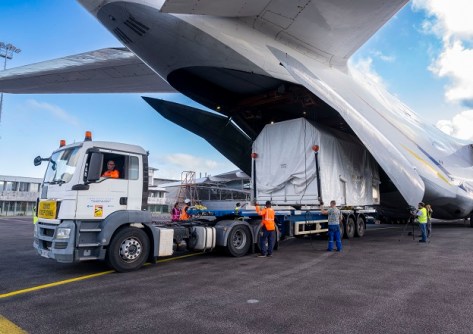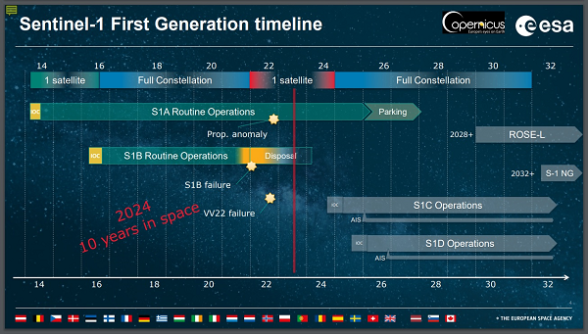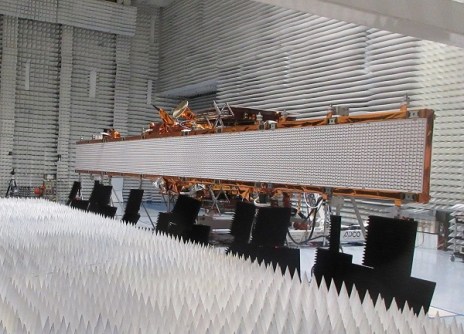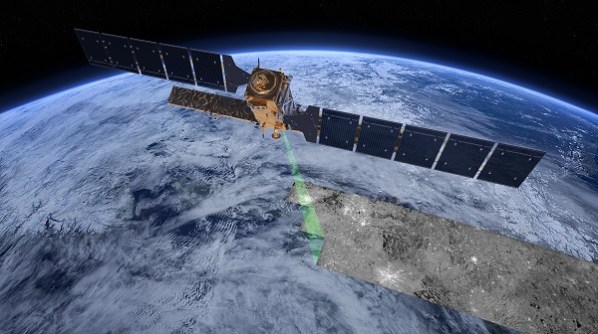
The Sentinel-1C radar spacecraft is one step closer to its end-of-2024 launch milestone, after having been transported to the European spaceport in French Guiana aboard an Antonov heavy lift aircraft.
The spacecraft will undergo final checks and preparations prior to launch on a Vega-C rocket.
Sentinel-1C will replace Sentinel-1B. The latter was launched in 2016 but suffered a technical failure 2022 that meant it could no longer complete its mission.
Sentinel-1B has been moved out of its operational orbit and will re-enter Earth’s atmosphere and burn up sometime in the next 25 years.
Once in orbit, Sentinel-1C will join the -1A spacecraft, which was launched in April 2014.

The Sentinel-1 system is one segment of Europe’s overall Copernicus Earth observation mission and is designed to always have two satellites flying in the same orbit, but 180 degrees apart, ensuring maximum coverage.
The Sentinel-1 orbital characteristics are:
- Type: Sun-synchronous
- Period: 98.74 minutes
- Sense: Ascending
- Inclination: 98.19 deg
- Altitude: 693 km
- Local solar time: 18:00
- Repeat cycle: 12 days

Sentinel-1 series spacecraft are equipped with C-band synthetic aperture radar (SAR), which enables high-accuracy observations of the Earth’s surface, both land and sea, at all times of the day and night and irrespective of cloud cover.
The radar can operate in four modes:
- Strip map: 80 km swath and 5×5 m (range x azimuth) resolution
- Interferometric wide-swath: 250 km swath, 5×20 m resolution
- Extra-wide-swath: 400 km swath and 20×40 m resolution
- Wave: 5×5 m resolution, leap-frog sampled images of 20×20 km
The radar’s range of modes, plus its general capabilities, make it suitable for undertaking a wide range of measurements:
- Landscape topography
- Soil moisture
- Vegetation
- Multi-purpose imagery (land)
- Ocean topography/currents
- Ocean surface winds
- Ocean wave height and spectrum
- Multi-purpose imagery (ocean)
- Sea ice cover, edge and thickness
Sentinel-1C is also equipped with an Automatic Identification System (AIS) receiver. AIS is a radio broadcast system using by shipping for tracking the movement of individual ships, revealing their identification number, direction and speed, which is important for collision avoidance and other purposes.
According to a 2021 paper, “The combination of space based AIS data with SAR imagery gives the benefit of an augmentation of the SAR data by facilitating the isolation and identification of targets of interest from the large number of legitimate vessels.”

“The team is ensuring that no stone has been left unturned to ensure that this extraordinary satellite is launched with the utmost safety and precision,” said Ramón Torres, Sentinel-1 Project Manager at ESA.
“The team eagerly awaits the moment when their hard work and dedication culminate in a flawless launch, marking another milestone for the Copernicus programme.”
Sentinel-1C’s sibling, Sentinel-1A, is due to reach its end of life around 2025. Its replacement, Sentinel-1D, has already been built and has been in storage since 2021.






